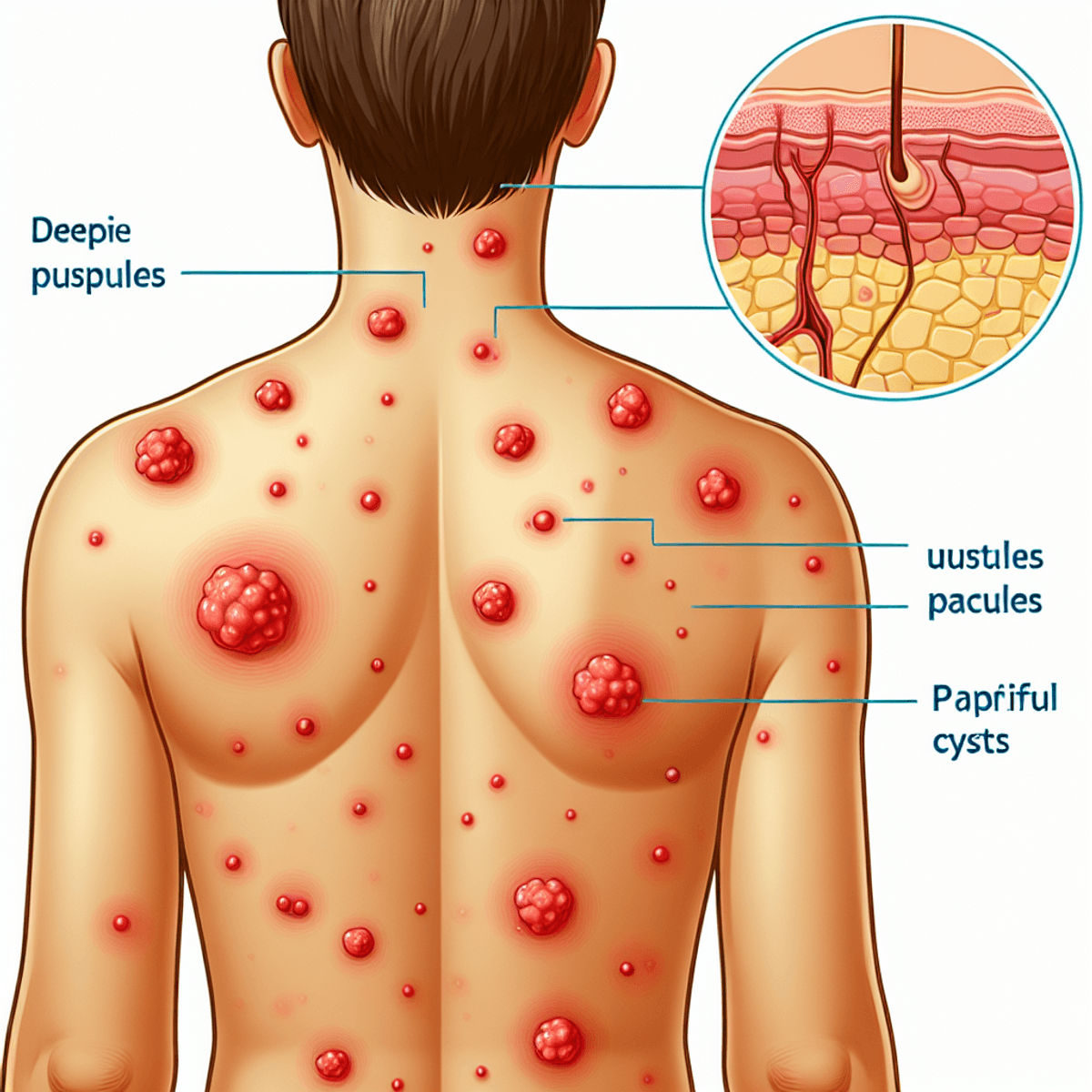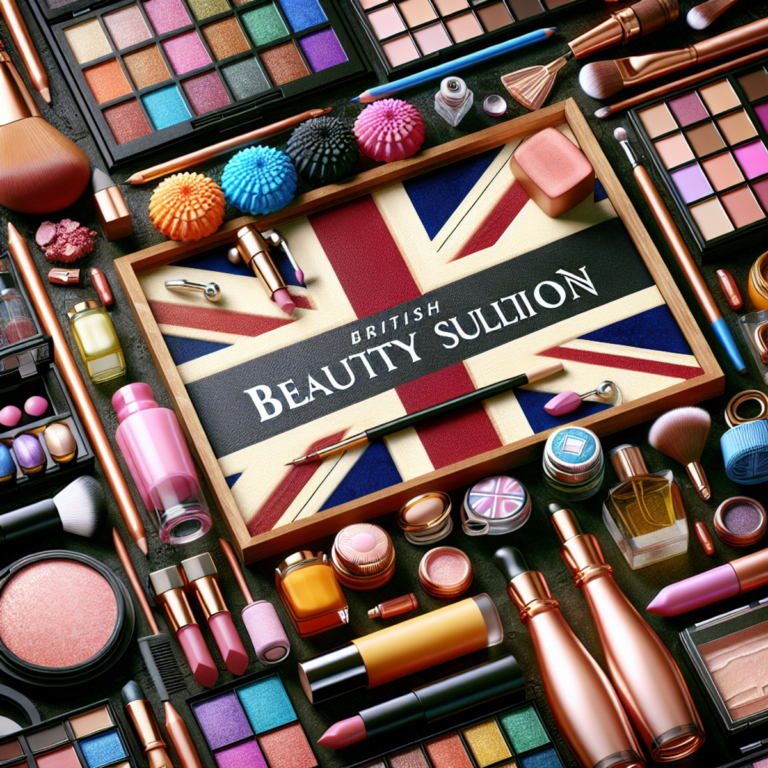Natural Remedies for Back Acne

Introduction
Back acne, also known as truncal acne, can significantly impact your daily life. The presence of painful bumps and blemishes across your back can affect your confidence, limit your clothing choices, and create discomfort during physical activities.
Living with back acne brings unique challenges:
- Difficulty wearing certain clothing styles
- Reluctance to participate in activities requiring exposed skin
- Physical discomfort during sleep or exercise
- Decreased self-esteem and social anxiety
Finding effective treatments for back acne becomes essential for both physical comfort and emotional well-being. While conventional treatments exist, many people seek natural alternatives to avoid harsh chemicals and potential side effects.
Natural remedies offer promising solutions for managing back acne. These treatments harness the power of botanical ingredients, dietary modifications, and lifestyle changes to address the root causes of acne formation. From tea tree oil’s antibacterial properties to stress management techniques, natural approaches provide gentle yet effective options for treating back acne.
This guide explores proven natural remedies to help you combat back acne. You’ll discover practical solutions ranging from topical treatments to dietary changes, empowering you to make informed decisions about your skincare journey.
Understanding Back Acne
Back acne, medically known as truncal acne, appears as inflamed lesions across the back, shoulders, and upper torso. These breakouts develop when hair follicles become clogged with excess oil, dead skin cells, and bacteria, leading to painful bumps and blemishes.
Common Symptoms of Back Acne:
- Red, inflamed pustules and papules
- Deep, painful cysts beneath the skin
- Blackheads and whiteheads
- Dark spots and scarring
- Uneven skin texture
Back acne differs from facial acne in several key aspects:
- Skin on the back is thicker and has larger pores
- Breakouts tend to be deeper and more severe
- Healing process takes longer
- Treatment application can be challenging due to location
- Higher risk of scarring due to delayed treatment
Demographics Affected by Back Acne
Back acne impacts various age groups differently:
Teenagers (13-19 years)
- Affects up to 85% of adolescents
- Triggered by hormonal changes during puberty
- Often appears alongside facial acne
- Can persist throughout teenage years
Adults (20+ years)
- Impacts 40-55% of adults aged 20-40
- Women experience higher rates due to hormonal fluctuations
- Stress and lifestyle factors play significant roles
- May develop later in life without teenage acne history
Athletes and Active Individuals
- Higher susceptibility due to frequent sweating
- Friction from tight clothing increases risk
- Post-workout bacteria buildup contributes to breakouts
- Common in both recreational and professional athletes
The severity of back acne varies among individuals, ranging from mild cases with occasional breakouts to severe conditions requiring medical intervention. Identifying your specific type and triggers is crucial for effective treatment.
Causes of Back Acne
Back acne develops through a complex interplay of various factors that trigger breakouts on your skin. Understanding these root causes helps you target the right treatment approach for your specific situation.
1. Hormonal Changes
Hormonal changes can significantly impact oil production and lead to back acne. Here are some key hormonal factors to consider:
- Puberty triggers increased androgen production, leading to excess oil secretion
- Menstrual cycles cause hormonal fluctuations that stimulate oil glands
- Pregnancy-related hormonal shifts can activate dormant acne
- Birth control changes often impact skin condition
2. Genetic Factors
Your genetic makeup plays a role in determining your susceptibility to acne. Consider the following genetic factors:
- Family history plays a significant role in acne susceptibility
- Inherited skin type affects oil production levels
- Genetic predisposition determines pore size and inflammation response
- DNA influences how your skin reacts to bacteria
3. Lifestyle Contributors
Several lifestyle choices can contribute to the development of back acne. Pay attention to these factors:
Diet Impact
The foods you consume can have an impact on your skin health. Consider the following dietary influences:
- High-glycemic foods spike insulin, increasing oil production
- Dairy products contain hormones that may trigger breakouts
- Processed foods can promote inflammation
- Dehydration affects skin cell turnover
Physical Factors
Certain physical activities and habits may contribute to back acne. Take note of these factors:
- Tight clothing traps sweat against your skin
- Heavy backpacks create friction and heat
- Post-workout sweat sitting on skin
- Unwashed bedding harbors bacteria
Environmental Elements
Your environment can also play a role in the development of back acne. Consider these environmental influences:
- Humidity levels affect oil production
- Air pollution clogs pores
- Certain medications trigger breakouts
- Chemical exposure from products
Stress Response
Stress can have a direct impact on your skin health. Be aware of these stress-related factors:
- Cortisol release increases oil production
- Sleep deprivation impacts skin healing
- Anxiety-related sweating traps bacteria
- Stress eating affects skin health
Each person’s back acne triggers vary, making it essential to identify your specific causes. Track your breakouts alongside these factors to pinpoint your primary triggers and develop targeted solutions for your skin.
Natural Remedies for Treating Back Acne
Tea tree oil stands out as a powerful natural remedy for back acne, backed by scientific research confirming its antibacterial properties. This essential oil targets Propionibacterium acnes – the bacteria responsible for acne formation – reducing inflammation and preventing new breakouts.
How to Use Tea Tree Oil:
- Mix 3-4 drops with 1 tablespoon of carrier oil (jojoba or coconut oil)
- Apply the mixture directly to affected areas using a cotton ball
- Use twice daily after cleansing your back
- Store the mixture in a dark glass bottle away from direct sunlight
Safety Precautions:
- Never apply undiluted tea tree oil directly to your skin
- Perform a patch test before full application
- Avoid sun exposure immediately after application
- Stop use if irritation occurs
The antimicrobial properties of tea tree oil penetrate deep into skin pores, dissolving excess sebum and clearing out dead skin cells. Research shows a 5% tea tree oil solution can reduce acne lesions by up to 50% within 45 days of regular use.
This natural treatment works best when the oil concentration stays between 2-5%. Higher concentrations might cause skin irritation, especially for sensitive skin types. The healing properties of tea tree oil extend beyond acne treatment – it helps fade acne scars and reduces post-inflammatory hyperpigmentation common with back acne.
Other Natural Remedies for Treating Back Acne
Regular exfoliation is a crucial step in preventing back acne breakouts. Dead skin cells can trap bacteria and oil beneath the skin’s surface, creating an ideal environment for acne-causing bacteria to thrive.
Natural Exfoliating Ingredients:
- Coffee Grounds: Mix with coconut oil to create a gentle scrub that helps remove dead skin cells
- Brown Sugar: Combined with honey creates an antimicrobial exfoliant
- Ground Oatmeal: Offers gentle exfoliation suitable for sensitive skin
- Baking Soda: Creates a mild abrasive paste when mixed with water
Additional Natural Solutions:
- Apple Cider Vinegar: Apply diluted solution to help balance skin pH
- Aloe Vera: Reduces inflammation and promotes healing
- Green Tea: Use as a compress to reduce redness and irritation
- Turmeric Paste: Creates an antibacterial mask when mixed with yogurt
Application Tips:
- Exfoliate 2-3 times per week
- Use gentle circular motions
- Apply light pressure to avoid irritation
- Rinse thoroughly with lukewarm water
- Follow with a non-comedogenic moisturizer
Warning Signs to Stop Exfoliating:
- Increased redness
- Skin sensitivity
- Burning sensation
- Visible irritation
- New breakouts
Natural remedies work best when incorporated into a consistent skincare routine. These gentle solutions help maintain clear skin while avoiding harsh chemicals that might trigger additional breakouts.
Dietary Changes to Support Back Acne Treatment
Your diet plays a crucial role in managing back acne. Research shows specific dietary modifications can reduce inflammation and promote clearer skin.
Anti-Inflammatory Foods
Incorporate these anti-inflammatory foods into your meals:
- Green leafy vegetables
- Berries
- Fatty fish rich in omega-3
- Turmeric
- Nuts and seeds
Foods to Limit
Limit the following foods that may trigger or worsen back acne:
- Dairy products
- High-glycemic foods
- Processed snacks
- Sugary beverages
A balanced diet rich in zinc supports skin healing and reduces sebum production. Include these zinc-rich options:
- Pumpkin seeds
- Lean meats
- Oysters
- Legumes
Hydration Tips
Stay hydrated to support your skin’s health. Here are some tips:
- Drink 8-10 glasses of water daily
- Include hydrating foods like cucumber and watermelon in your diet
- Consider green tea for its antioxidant properties
Supplements That May Help
Certain supplements may also benefit your skin. Consult with a healthcare professional before adding any new supplements to your routine:
- Vitamin A
- Vitamin D
- Probiotics
- Fish oil
Track your food intake for 2-3 weeks to identify potential trigger foods. Some people notice improvements within weeks of making dietary changes. Remember that individual responses to dietary modifications vary, and what works for one person might not work for another.
A nutrient-rich diet supports your skin’s natural healing processes and complements other acne treatment methods. Pair these dietary changes with proper skincare routines for optimal results.
Stress Management Techniques for Managing Back Acne
Stress triggers hormonal changes that directly impact your skin health. When you’re stressed, your body produces excess cortisol, leading to increased sebum production and inflammation – prime conditions for back acne breakouts.
Effective Stress-Relief Practices for Clearer Skin:
1. Mindful Breathing
- Practice deep breathing exercises for 5-10 minutes daily
- Focus on slow, controlled breaths to reduce cortisol levels
- Try the 4-7-8 breathing technique before bed
2. Yoga Poses for Stress Relief
- Child’s pose
- Cat-cow stretch
- Forward fold
- Legs up the wall
3. Meditation Techniques
- Guided visualization
- Body scan meditation
- Progressive muscle relaxation
- Mindfulness meditation apps
Creating a Stress-Management Routine:**
- Set aside 15-20 minutes each day for stress relief
- Practice your chosen techniques consistently
- Track your stress levels and acne patterns
- Adjust your routine based on what works best
Research shows that regular stress management can reduce acne severity by up to 40%. Combining these techniques with proper skincare creates a powerful approach to managing back acne naturally.
Pro tip: Start with just 5 minutes of meditation or gentle yoga. Small, consistent efforts often yield better results than sporadic longer sessions.
Lifestyle Changes to Support Treatment
A consistent skincare routine acts as your first line of defense against stubborn back acne. Your daily regimen should include:
- Gentle Cleansing – Use a non-comedogenic body wash containing salicylic acid or benzoyl peroxide twice daily
- Regular Exfoliation – Apply a mild body scrub 2-3 times weekly to remove dead skin cells
- Spot Treatment – Target individual blemishes with tea tree oil or benzoyl peroxide products
- Hydration – Apply an oil-free, non-comedogenic moisturizer after cleansing
Recommended Products for Back Acne:
- Neutrogena Body Clear Body Wash
- CeraVe SA Body Wash with Salicylic Acid
- Paula’s Choice 2% BHA Body Spot Exfoliant
- The Ordinary Niacinamide 10% + Zinc 1%
- La Roche-Posay Effaclar Mat Moisturizer
Pro Tips for Your Routine:
- Shower immediately after sweating
- Change bed sheets weekly
- Use fresh towels daily
- Apply products with clean hands
- Allow skin to dry completely before dressing
Incorporating these practices helps prevent new breakouts and reduces existing blemishes. A dedicated skincare routine paired with high-quality products creates the foundation for clear, healthy skin. Remember to patch test new products before full application to avoid potential reactions.
Clothing Choices That Help Prevent Back Acne Breakouts
Your wardrobe choices play a crucial role in managing back acne. The right fabrics can minimize sweat accumulation and reduce skin irritation, helping you prevent new breakouts.
Recommended Fabrics:
- 100% cotton – naturally breathable and moisture-wicking
- Bamboo fabric – antibacterial properties and excellent ventilation
- Moisture-wicking synthetic materials – designed for athletic wear
- Linen – lightweight and allows maximum airflow
Fabrics to Avoid:
- Polyester
- Nylon
- Spandex (when not blended with breathable materials)
- Rayon
Smart Clothing Tips:
- Choose loose-fitting tops to reduce friction against your skin
- Wear white or light-colored clothing – dark dyes can irritate sensitive skin
- Change out of sweaty clothes immediately after exercise
- Wash new clothes before wearing them to remove potential irritants
Specific Clothing Recommendations:
- Cotton undershirts as a protective layer
- Sports tops with mesh ventilation panels
- Loose-fitting cotton t-shirts for daily wear
- Natural fiber tank tops for hot weather
Proper clothing care is essential – wash your clothes with fragrance-free detergents and avoid fabric softeners that can leave residue on your garments. Consider using an extra rinse cycle to ensure all detergent is removed from your clothes.
When to Seek Professional Help for Severe Cases of Back Acne
Natural remedies can effectively treat mild to moderate back acne, but certain signs indicate the need for professional dermatological intervention:
Red Flag Symptoms:
- Deep, painful cysts or nodules
- Scarring or dark spots
- Widespread breakouts covering large areas
- Persistent acne lasting several months
- Emotional distress affecting daily life
- Failed response to over-the-counter treatments
A dermatologist can provide specialized treatments unavailable through natural or over-the-counter options:
Prescription medications:
- Topical retinoids
- Oral antibiotics
- Hormonal treatments
- Isotretinoin for severe cases
Professional procedures:
- Chemical peels
- Light therapy
- Extractions
- Cortisone injections
You should schedule a dermatologist consultation if your back acne:
- Persists despite consistent natural treatment for 4-6 weeks
- Causes physical discomfort or pain
- Leads to significant scarring
- Impacts your self-esteem or social activities
Professional treatment plans combine multiple approaches tailored to your specific skin condition, offering targeted solutions that address both active breakouts and underlying causes of persistent back acne.
Conclusion: Embracing a Holistic Approach to Managing Back Acne Naturally
Managing back acne requires a comprehensive strategy that addresses multiple aspects of your health and lifestyle. Natural remedies offer effective solutions when combined with mindful lifestyle choices:
Key Components of Successful Back Acne Management:
- Use natural treatments like tea tree oil and botanical exfoliants consistently
- Adopt skin-friendly dietary habits by incorporating anti-inflammatory foods
- Choose breathable fabrics and loose-fitting clothing
- Practice regular stress management techniques
- Maintain proper hygiene with non-comedogenic products
Your journey to clear skin might require patience and experimentation to find the right combination of treatments. Natural remedies work best when integrated into a broader wellness routine that considers your unique skin type and lifestyle factors.
Remember that severe or persistent back acne may need professional intervention. A dermatologist can provide guidance on combining natural treatments with medical solutions for optimal results.
Take control of your skin health by embracing these natural approaches while staying attentive to your body’s responses. A balanced, holistic strategy empowers you to manage back acne effectively and sustainably, leading to clearer, healthier skin and improved confidence.
Start Your Natural Treatment Journey:
- Document your progress with different remedies
- Listen to your skin’s responses
- Adjust treatments as needed
- Stay committed to your chosen routine
- Trust the healing power of natural solutions
FAQs (Frequently Asked Questions)
What is back acne and how does it differ from facial acne?
Back acne, also known as truncal acne, refers to the formation of pimples and blemishes on the back. It can differ from facial acne in terms of its common symptoms and the areas affected, often being more extensive and sometimes more stubborn to treat.
What are some natural remedies for treating back acne?
Natural remedies for back acne include the use of tea tree oil due to its antibacterial properties, gentle exfoliation methods to prevent clogged pores, and maintaining a consistent skincare routine. Additionally, dietary changes such as using oil-free moisturizers can support treatment.
How do lifestyle factors contribute to back acne?
Lifestyle factors such as hormonal changes, genetics, diet, and stress can significantly contribute to the development of back acne. For example, hormonal fluctuations during puberty or menstruation can trigger breakouts, while a poor diet may exacerbate skin issues.
When should I consider seeking professional help for back acne?
You should consider seeking professional help if you experience persistent or severe cases of back acne that do not respond to natural remedies or over-the-counter products. Signs that indicate this need include frequent flare-ups and significant discomfort or scarring.
What role does stress play in back acne?
Stress can negatively impact skin health by increasing hormone levels that trigger acne breakouts. Effective stress management techniques such as yoga and meditation can help reduce the frequency and severity of back acne flare-ups.
How important is clothing choice in preventing back acne?
Choosing breathable fabrics is crucial in preventing back acne. Wearing materials that minimize sweat and irritation on the back can help reduce the likelihood of new pimples forming. It’s recommended to avoid tight-fitting clothing that may exacerbate skin irritation.










